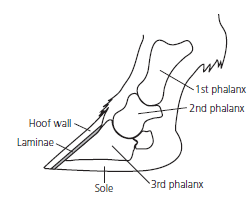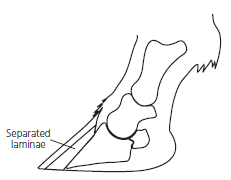Although well adapted for running, modern horses are susceptible to a foot condition called laminitis, a deterioration
Question:
(a)

Normal foot anatomy.

Foot of horse with laminitis.
Although the cause of laminitis is not known, many predisposing factors have been correlated with the onset of laminitis. One of these factors is overfeeding with lush spring grasses or other sources of high carbohydrates. One hypothesis is that the excess carbohydrates lead to toxins in the blood that irritate the sensitive laminae.
What are some differences between the normal foot and the foot with laminitis? Consider where the weight of the horse is placed.
Fantastic news! We've Found the answer you've been seeking!
Step by Step Answer:
Related Book For 

Campbell Biology
ISBN: 978-0321775658
10th edition
Authors: Jane B. Reece, Lisa A. Urry, Michael L. Cain, Steven A. Wasserman, Peter V. Minorsky, Robert B. Jackson
Question Posted:





